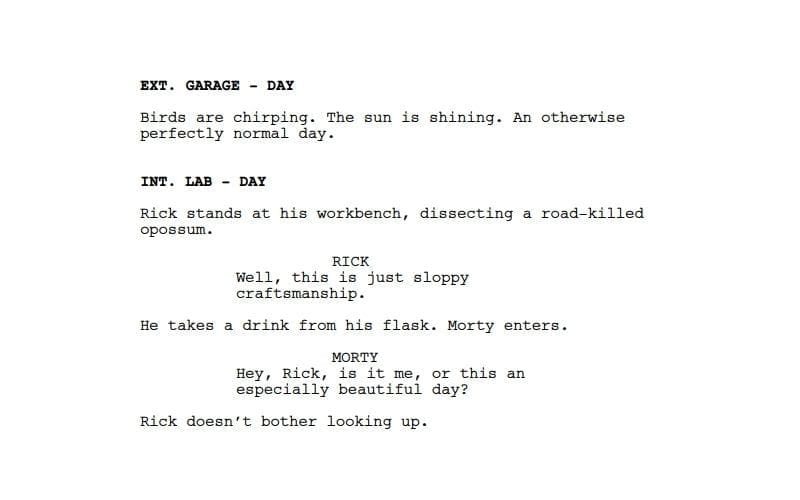

- #HOW TO WRITE A SCRIPT HOW TO#
- #HOW TO WRITE A SCRIPT FULL#
- #HOW TO WRITE A SCRIPT SERIES#
- #HOW TO WRITE A SCRIPT MAC#
Print to screen: #Syntax to print a variable echo $name #output abc To access user-defined variables use the following syntax: #Syntax to access a variable $name User-defined variables are as simple as we have in any other programming language but variables can store any type of data, as in the following example: # Syntax to define a variable name=abc NOTE - Some of the above system variables may have a different value in a different environment.

In Linux Shell Scripting, there are two types of variable: Variables are a named storage location that may take different values, but only one at a time. Programmers can give a unique name to this memory address called variables. Memory is divided into small locations, and each location had a unique number called memory address, which is used to hold data. To process data, data must be kept in the computer’s memory.
#HOW TO WRITE A SCRIPT HOW TO#
Now that we have seen how to write a basic Hello World example, let’s look at some of the language constructs that you will find yourself using most of the time when writing shell scripts. Here is a sample article showing some of the commonly used ones. You can find several articles on the internet for that. Now we are done with the very basic shell script that prints ` Hello world` to the screen.īefore we go any deeper into few language constructs of shell scripting, you should have some basic knowledge of Linux commands. You can set the execute permission as follows chmod +x my_script.sh //add execute permissionĮxecute script as anyone of the following commands $ bash my_script.sh $. Second line is just the echo statement, which prints the words after it to the terminal.Īfter saving the above file, we need to give it execute permission to make it runnable. It tells Unix that this script should be run through the /bin/bash shell. The first line called a hashbang or shebang.

Open your favorite editor and write a shell script file named as my_script.sh containing following lines #!/bin/bash echo "hello world" //print to screen
#HOW TO WRITE A SCRIPT MAC#

Furthermore, combining a shell with graphical desktop environment allows you to get the best of both worlds The ability to combine commands allows you to create new commands, thereby adding value to your operating system.
#HOW TO WRITE A SCRIPT FULL#
Shell scripts are used to automate administrative tasks, encapsulate complex configuration details and get at the full power of the operating system. Should I learn?Īgreed that anything you can do with a shell script, you can do that using some programming language such as Ruby, Python or Go but mostly for the small tasks, you will find yourself using Shell Scripts in one way or another. In this post, I am going to cover the basic elements of a bash script. Unix has more than one possible shell, and scripting any of them is a topic that can easily pack a complete book. Typical operations performed by shell scripts include file manipulation, program execution, and printing text.” The various dialects of shell scripts are considered to be scripting languages. “A shell script is a computer program designed to be run by the Unix shell, a command-line interpreter. The difference comes from the fact that bash scripts can do a lot more than batch files.
#HOW TO WRITE A SCRIPT SERIES#
You just put a series of commands into a text file and run them together. For anyone who has worked with DOS’s bat files, it’s almost the same concept. Shell scripts are just set of commands that you write in a file and run them together.


 0 kommentar(er)
0 kommentar(er)
